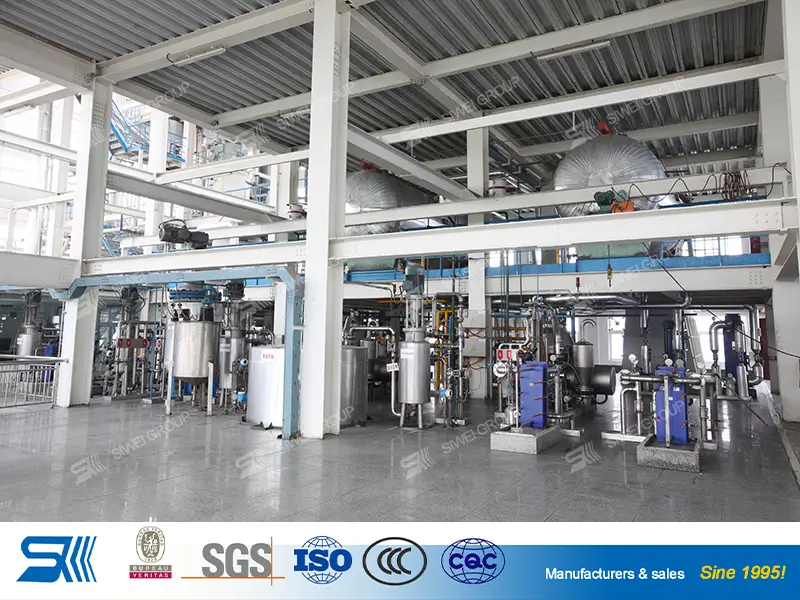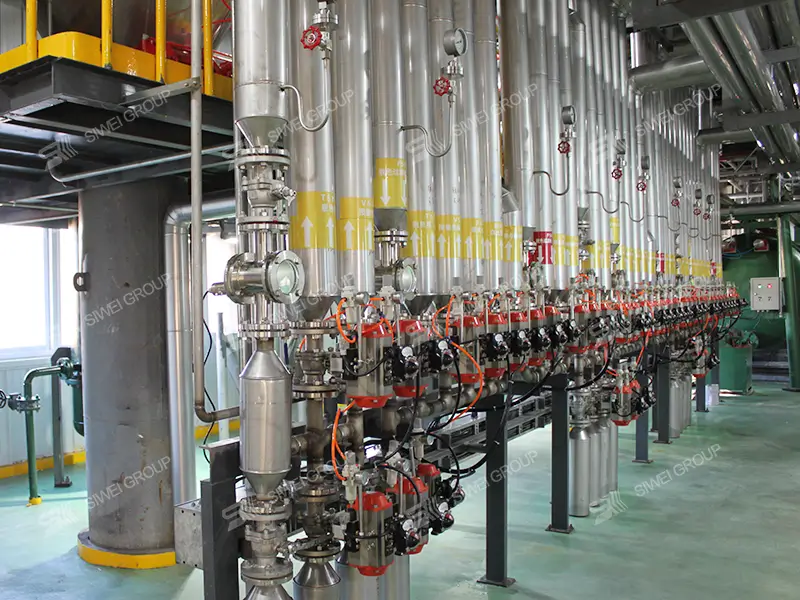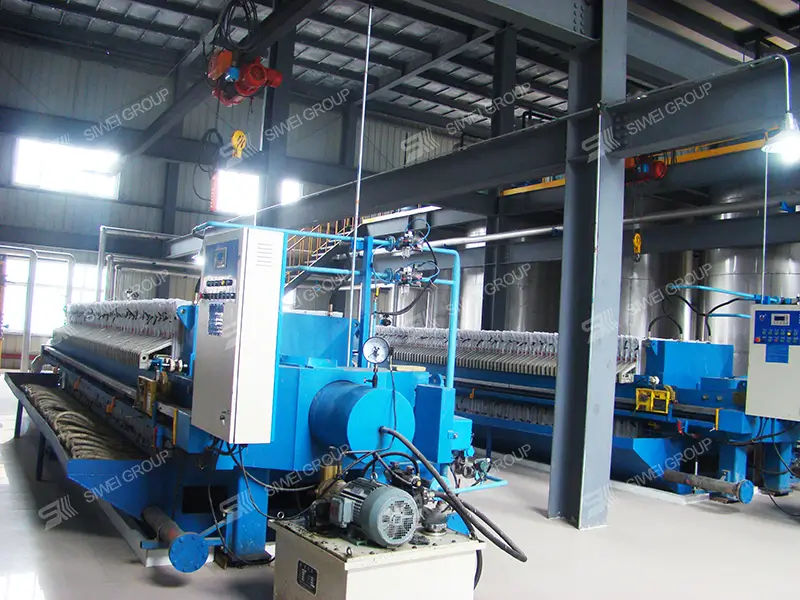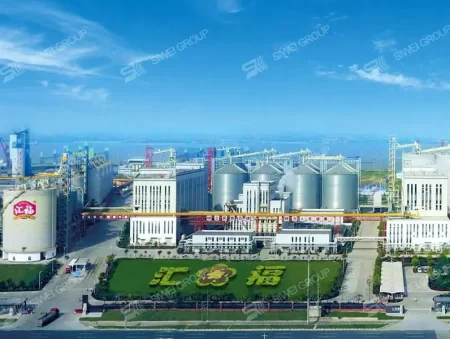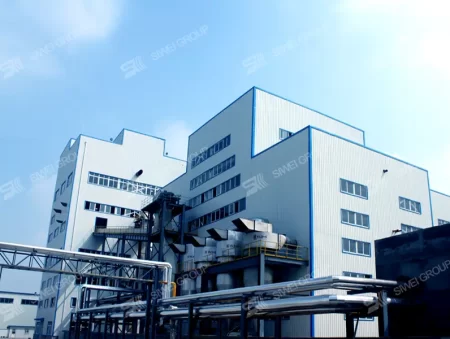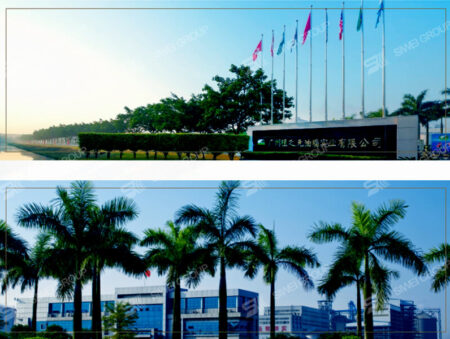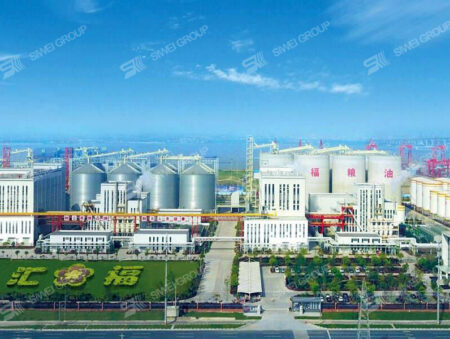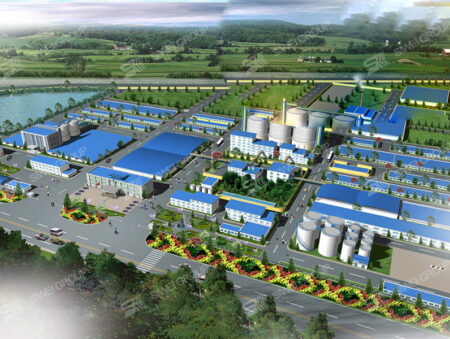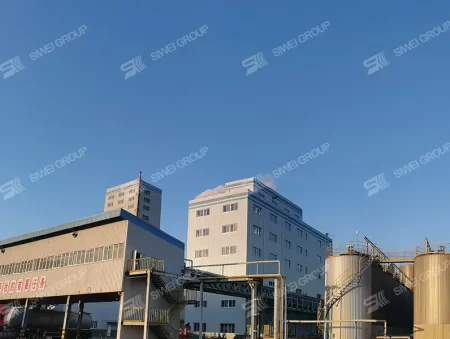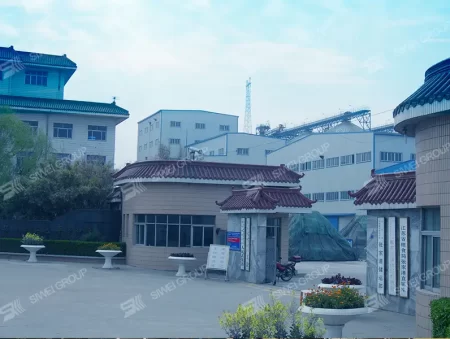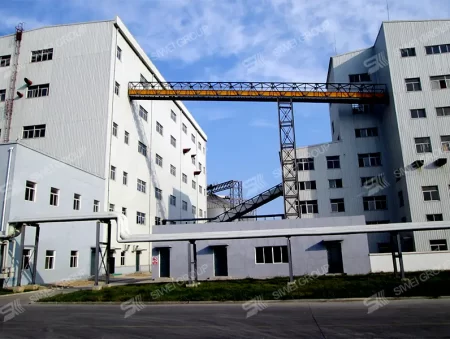Crude palm oil → Degumming and drying section → Bleaching section → Physical deacidification and deodorization section → Refined oil → Fractionation section (according to customer needs) → Palm stearin and palm olein
-
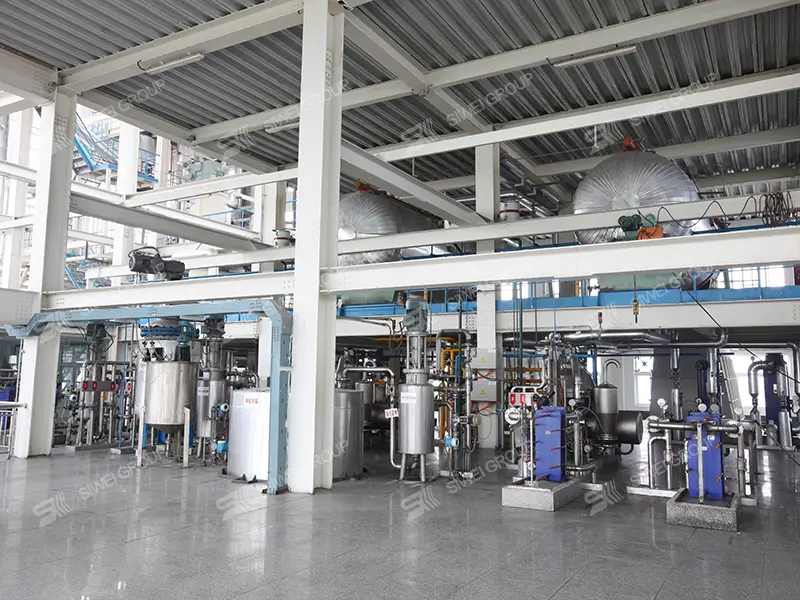
-
Edible oil refining
-
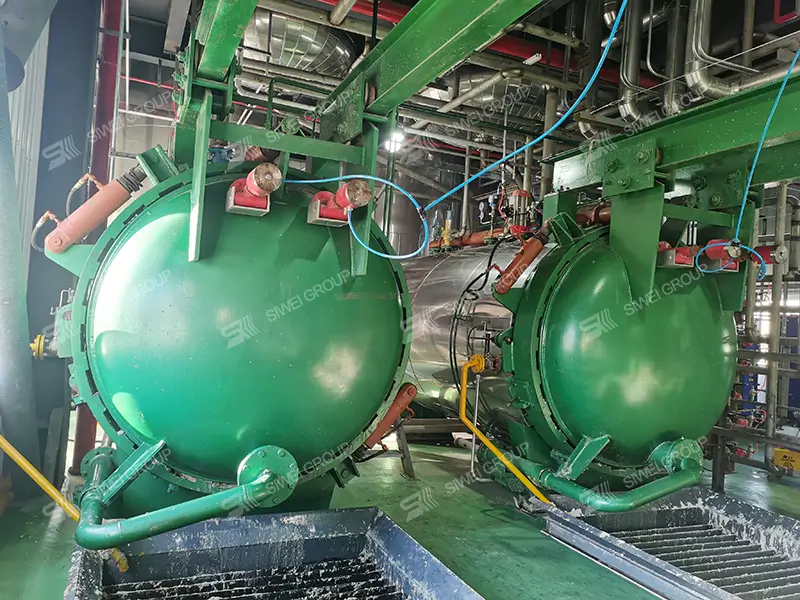
-
Horizontal Oil filter
Degumming and drying section
- Due to the special characteristics of palm oil, there is very little gum in the crude oil. After the crude oil passes through the bag filter to remove solid impurities, it is accurately measured by a mass flow meter and then enters the degumming process. After heat exchange and heating, it is fully mixed with phosphoric acid and then reacted in the acid reaction tank for 20-40 minutes (depending on the quality of the crude oil), then the temperature is raised for drying; the drying oil and crude oil are exchanged for heat to save energy and can be directly used in the next process for filtration and degumming. The dry oil tank is operated in a closed vacuum state, so that the oil does not come into contact with the air, which reduces the oxidation of the oil and ensures the inherent nutritional value of the oil.
- All temperatures in the entire degumming process can be set automatically, and the flow rate can be automatically adjusted. All operations can be completed in the control room.
-
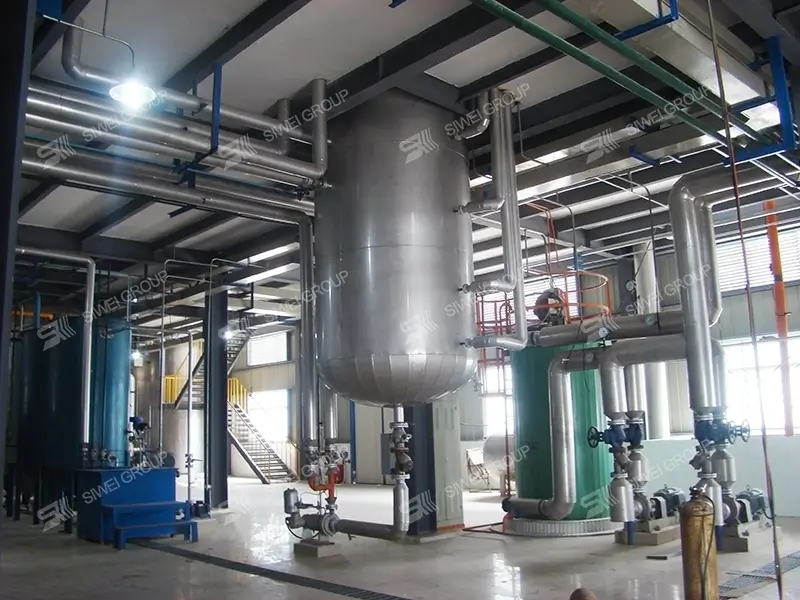
-
Deodorizing tank
-
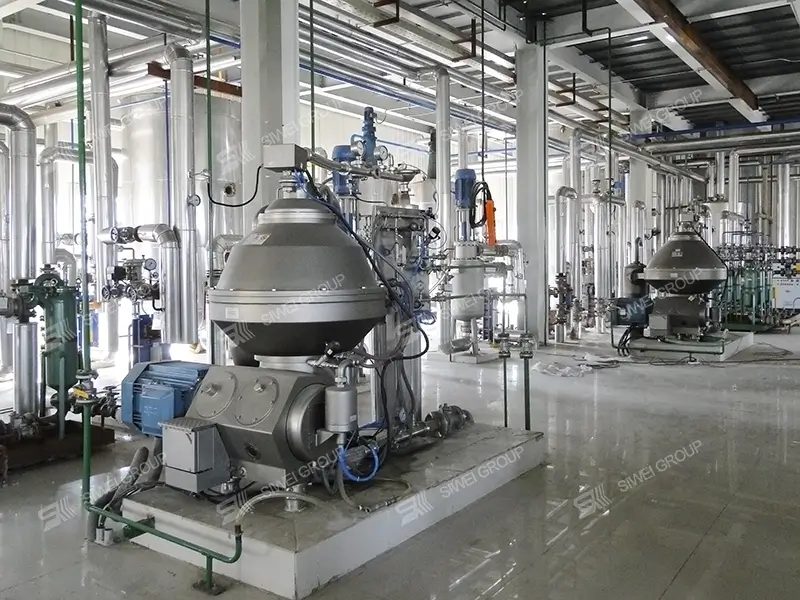
-
Disc centrifugal separator
Bleaching section
- After the degumming oil is preheated, it enters the premixing tank after heating. The bentonite is added from the bentonite tank to the premixing tank through the metering device. After stirring and mixing, the mixture of bentonite and oil enters the bleaching tower for bleaching reaction and stays in the bleaching tower for 30 to 60 minutes, and then pumped into the filter through the bleaching pump for filtration. The phospholipids and bentonite in the oil are filtered and separated. The filtered bleached oil first removes the remaining bentonite particles through a fine filter, and then enters the deaerator for removal oxygen remaining in the oil. The temperature of the entire bleaching process is automatically controlled and adjustable. The filtration system is automatically controlled to realize automatic oil feeding, circulation, filtration and other operations.
- In the bleaching section, an odor capture device is equipped to use circulating water to capture the odor in the purge steam and eliminate odor pollution during the bleaching process.
-
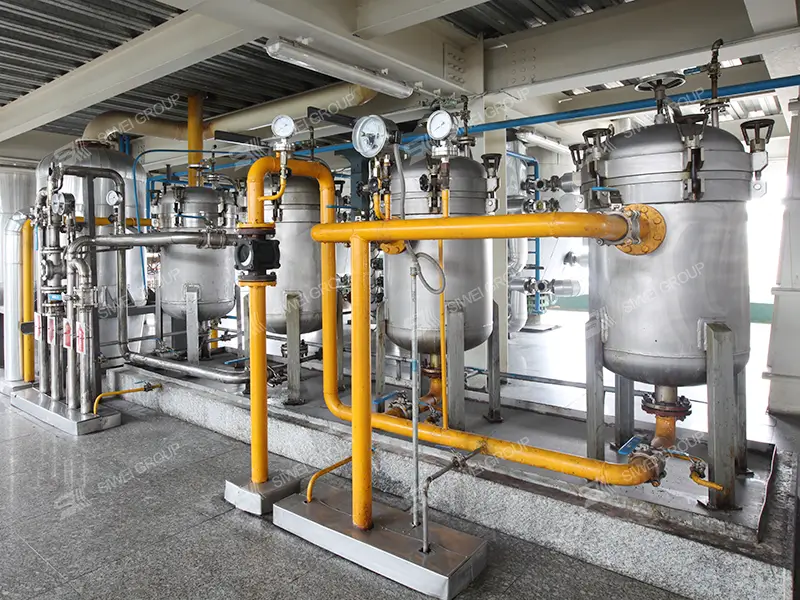
-
Bleaching tank
-
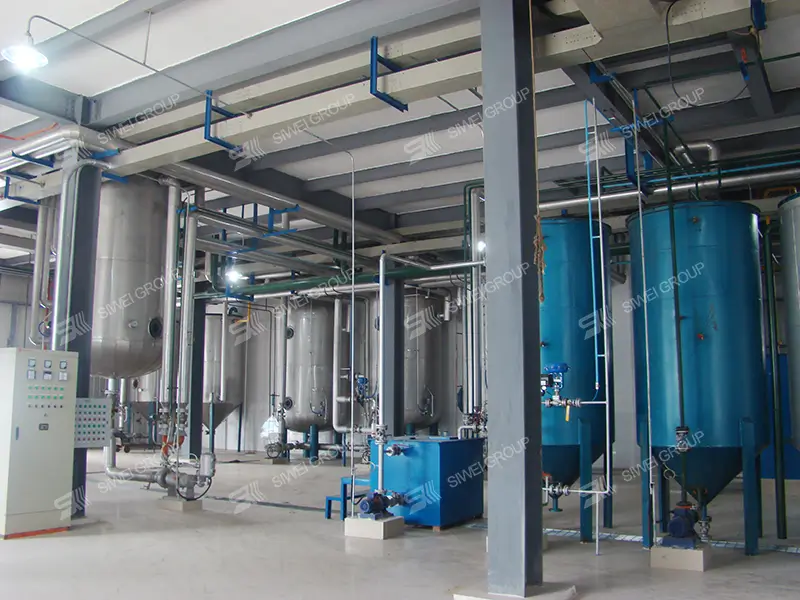
-
Oil fractionation
Deodorization section
- The bleached oil coming from the bleaching section will enter the deodorization section to remove free fatty acids and unpleasant gaseous substances. Deodorization tower is used to remove these substances using steam under high vacuum conditions. The fatty acids are collected in a fatty acid trap and pumped as a by-product to a receiving tank.
- In order to save energy, the bleached oil first exchanges heat with high-temperature deodorized oil through a heat exchanger and then uses high-pressure steam to heat the deodorized oil to a deodorizing temperature of 250°C to 260°C.
- A water ring vacuum pump is designed in the vacuum system of the deodorization section to use circulating water to capture the odor extracted by the deodorization vacuum and eliminate odor pollution during the deodorization process.
Fractionation section
- The refined palm oil coming from the deodorization section is initially cooled through a heat exchange system, which is used to recover heat energy and pre-cool the oil to reduce energy consumption. During the heat recovery process, the oil temperature is gradually lowered to prepare for subsequent crystallization.
- The circulating cooling water in the cooling tower further reduces the oil temperature to 40°C to 45°C, which is a critical stage because this temperature range is beneficial to promote the crystallization of specific ingredients such as wax and stearic acid.
- The refined oil is then conveyed to a crystallization tank where it is gradually lowered to the fractionation temperature. In the crystallization tank, the oil is maintained at a temperature that allows the wax and stearin crystals to form and grow. Proper residence time is critical for crystal growth as it determines the size and quality of the crystals.
- The oil temperature is gradually lowered during the crystallization process to ensure full maturity and uniformity of the crystals. The oil is passed through tempered water for final cooling and the temperature is adjusted to the final fractionation temperature through the cooling water system.
- Finally, the mixture of oil, wax and stearic acid is conveyed to a filter press for separation after reaching the required fractionation temperature. The palm stearin is separated and the palm olein is collected.
- The entire fractionation process is completed through precise temperature and time control, aiming to ensure the effective separation of wax and stearic acid, while minimizing energy consumption and ensuring the quality and production efficiency of finished palm oil products.

